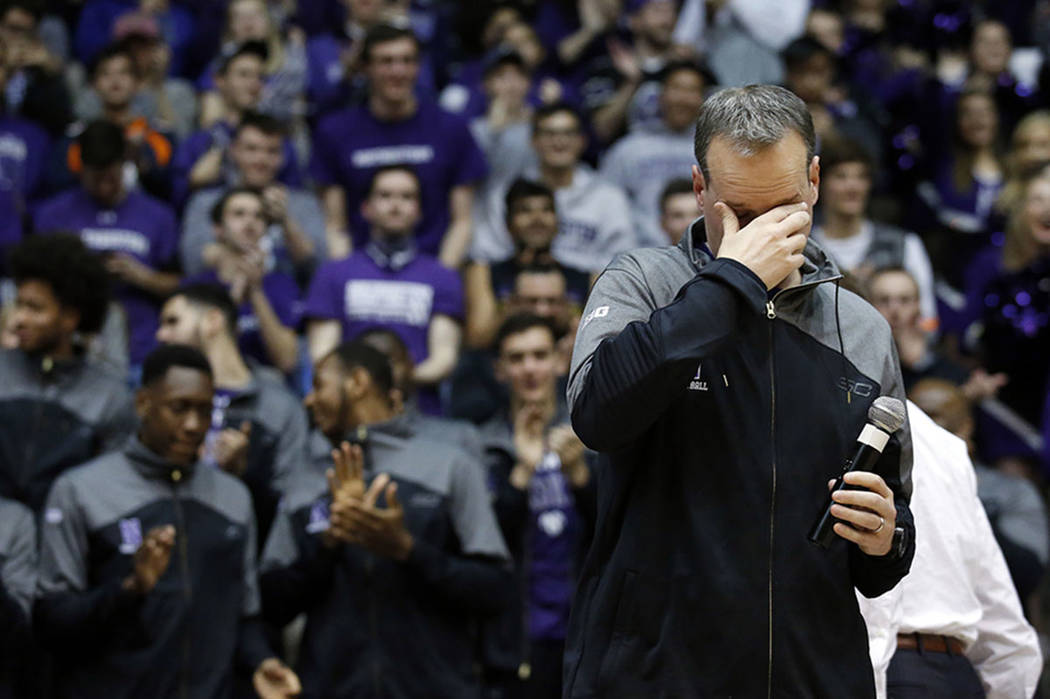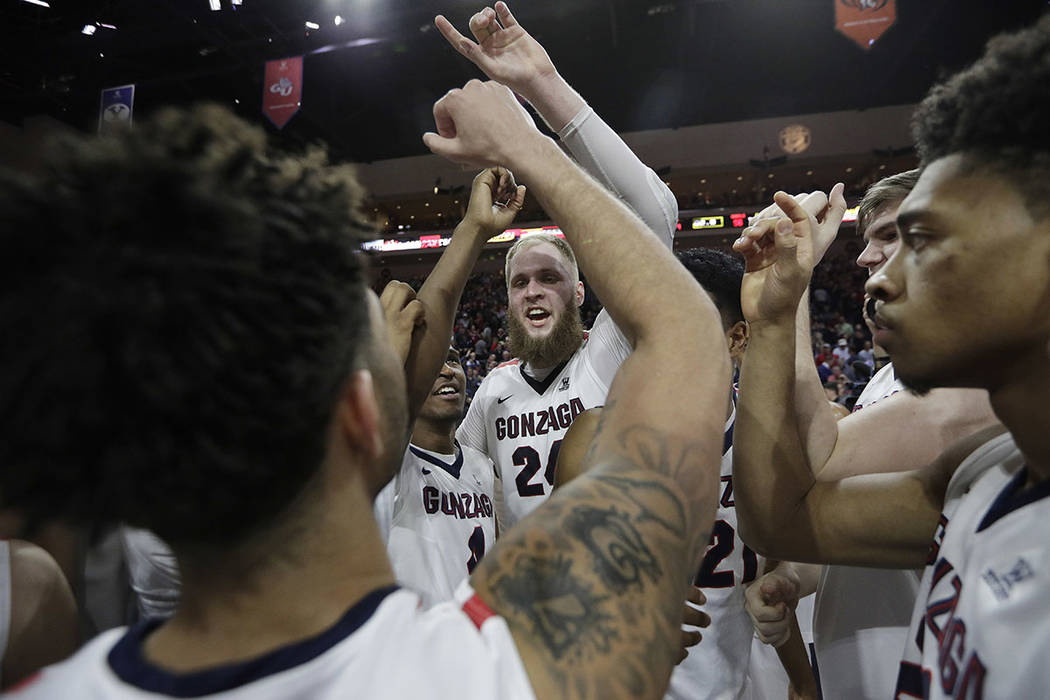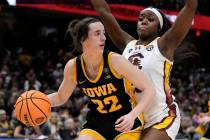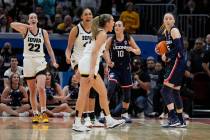Villanova grabs top seed in NCAA Tournament; Northwestern finally gets in


For pure drama, best wait ‘til the shots start flying.
For sheer excitement, Selection Sunday belonged to Northwestern.
Though it was no surprise when that school’s name popped into the NCAA Tournament bracket, it was a reminder that, yes, this is March Madness — that time of year where anything can happen. The Wildcats, longtime losers in the Big Ten, were officially invited to the tournament for the first time in school history, and the group-hugging, selfie-taking reaction from the players (and others) when their name came up showed how much the accomplishment really meant.
“When I came here four years ago, it was a belief in a day like today,” said coach Chris Collins, whose team won 23 games on its way to the tournament.
Another set of Wildcats — the ones from Villanova — were given the tournament’s top overall seed. The defending champions were joined by Kansas, North Carolina and Gonzaga on the “1” line — a quartet that produced very little in the way of head scratching.
With the brackets set, the action begins Tuesday and Wednesday with opening-round games that will include matchups between the last at-large teams invited into the draw: No. 11 seeds Providence vs. Southern California and Kansas State vs. Wake Forest.
The tournament gets into full swing Thursday, with the Final Four set for April 1 and 3 in Phoenix. Villanova, which won the title last year on a buzzer-beating jump shot by Kris Jenkins, will open its quest for back-to-back titles against the winner of an opening-round game between New Orleans and Mount Saint Mary’s.
“I want the guys to enjoy it tonight, and then tomorrow, we’re just one of 68 teams,” Villanova coach Jay Wright said.
Though Kansas was the overall second seed, it opened as the favorite in Las Vegas, at 8-1. North Carolina and Villanova were next at 9-1, followed by Gonzaga, Duke and Kentucky at 10-1.
Overall, the bracket produced more small quibbles than true blockbusters.
If there was any debate about the top, it was about whether Duke (27-8) really belonged as a No. 1 instead of a No. 2, which is where it ended up. The Blue Devils won four games in four nights at the Atlantic Coast Conference tournament, and have beaten the rival Tar Heels (27-7) twice. But Mark Hollis, the chair of the selection committee, beat back that debate quickly, telling the commentators on CBS (who dragged out the bracket reveal for more than a half hour) that Duke entered the week as a No. 4 seed.
And though the Blue Devils kept winning over the weekend, “they got stopped on the way by teams that won both their regular-season and conference tournaments (Kentucky and Arizona) and they were never compared to teams on the No. 1 line,” Hollis said.
Teams that didn’t make it off the bubble included Syracuse and Illinois State.
Syracuse was vulnerable because of its 84th ranking in the RPI and 2-11 record on the road. Still, the Orange ouster was notable because of the outcry when Jim Boeheim’s team made the field with a similarly mediocre resume last year — then made it all the way to the Final Four.
“Last year, we had the same number of losses (14) and the committee chose to go with teams that had wins,” said Boeheim, whose team’s losses this season included blowouts against lower-division St. Johns and Boston College. “This year, it was virtually the same committee but they were emphasizing the losses you had.”
Illinois State’s chances took a blow when it lost to Wichita State by 20 in the final of the Missouri Valley Conference. Also, it turns out Wichita State wasn’t as highly regarded as many suspected — the 20th-ranked team in the latest Associated Press poll only got a No. 10 seed.
Kentucky coach John Calipari, whose Wildcats could face Wichita State in the second round, re-emphasized a point he made last year.
“When you mis-seed somebody, it hurts the seeds above them,” he said. “You put a team at ‘8’ that shouldn’t be there, and the ‘1’ looks at it like, ‘Why are we playing this team?’”
With never-ending realignment turning more mid-major programs into true majors, the number of so-called little guys making the tournament continues to decline — even if you do count Gonzaga of the West Coast Conference as one of those.
Led by the ACC with nine teams, then the Big East and Big Ten with seven each, the six biggest conferences took 32 of the 36 at-large spots this year.

Click here to see the bracket, and download it after it opens.












